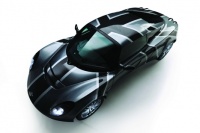Surface charge: making electric cars lighter with body parts that double as batteries
Materials that turn car body parts into batteries could help lighten the load on electric vehicles - and a host of other technologies.


Some companies are looking at incorporating the batteries of electric cars into the chassis structureDespite advances in structural energy storage, central battery units are likely to be a feature of electric vehicles for some years to come. As a result, some companies are looking to use conventional batteries in a more structural way.
Alongside its experimental material, the Lola-Drayson electric car features a primary battery that is integrated into the carbon chassis of the car rather than sitting in a casing that is bolted on separately - simplifying the design and halving the weight of the battery support.
Green utility company Ecotricity has also produced an electric racing car called Nemesis (pictured) that incorporates its own version of structural energy storage, packaging a 400V lithium-cobalt battery system into part of the chassis structure.
The structure, developed by Norfolk-based Router Automotive, features an aluminium, carbon-fibre and Kevlar outer enclosure bonded and mechanically bolted to the chassis. A resin and glass-fibre inner enclosure complete with a fan-assisted labyrinth air flow system provides electrical and thermal insulation and manages the battery’s temperature.
Register now to continue reading
Thanks for visiting The Engineer. You’ve now reached your monthly limit of premium content. Register for free to unlock unlimited access to all of our premium content, as well as the latest technology news, industry opinion and special reports.
Benefits of registering
-
In-depth insights and coverage of key emerging trends
-
Unrestricted access to special reports throughout the year
-
Daily technology news delivered straight to your inbox










Water Sector Talent Exodus Could Cripple The Sector
Maybe if things are essential for the running of a country and we want to pay a fair price we should be running these utilities on a not for profit...